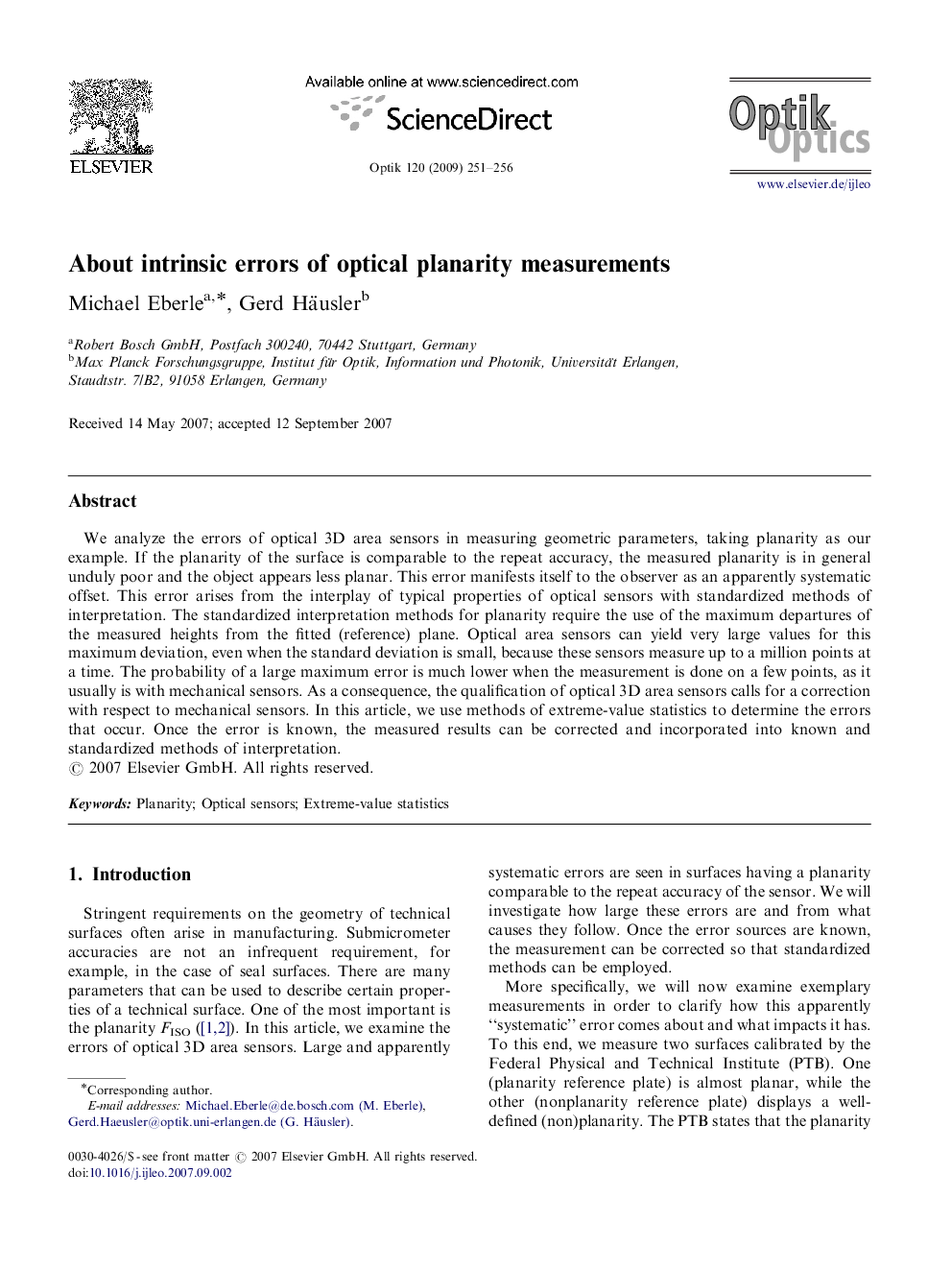| Article ID | Journal | Published Year | Pages | File Type |
|---|---|---|---|---|
| 852375 | Optik - International Journal for Light and Electron Optics | 2009 | 6 Pages |
We analyze the errors of optical 3D area sensors in measuring geometric parameters, taking planarity as our example. If the planarity of the surface is comparable to the repeat accuracy, the measured planarity is in general unduly poor and the object appears less planar. This error manifests itself to the observer as an apparently systematic offset. This error arises from the interplay of typical properties of optical sensors with standardized methods of interpretation. The standardized interpretation methods for planarity require the use of the maximum departures of the measured heights from the fitted (reference) plane. Optical area sensors can yield very large values for this maximum deviation, even when the standard deviation is small, because these sensors measure up to a million points at a time. The probability of a large maximum error is much lower when the measurement is done on a few points, as it usually is with mechanical sensors. As a consequence, the qualification of optical 3D area sensors calls for a correction with respect to mechanical sensors. In this article, we use methods of extreme-value statistics to determine the errors that occur. Once the error is known, the measured results can be corrected and incorporated into known and standardized methods of interpretation.
